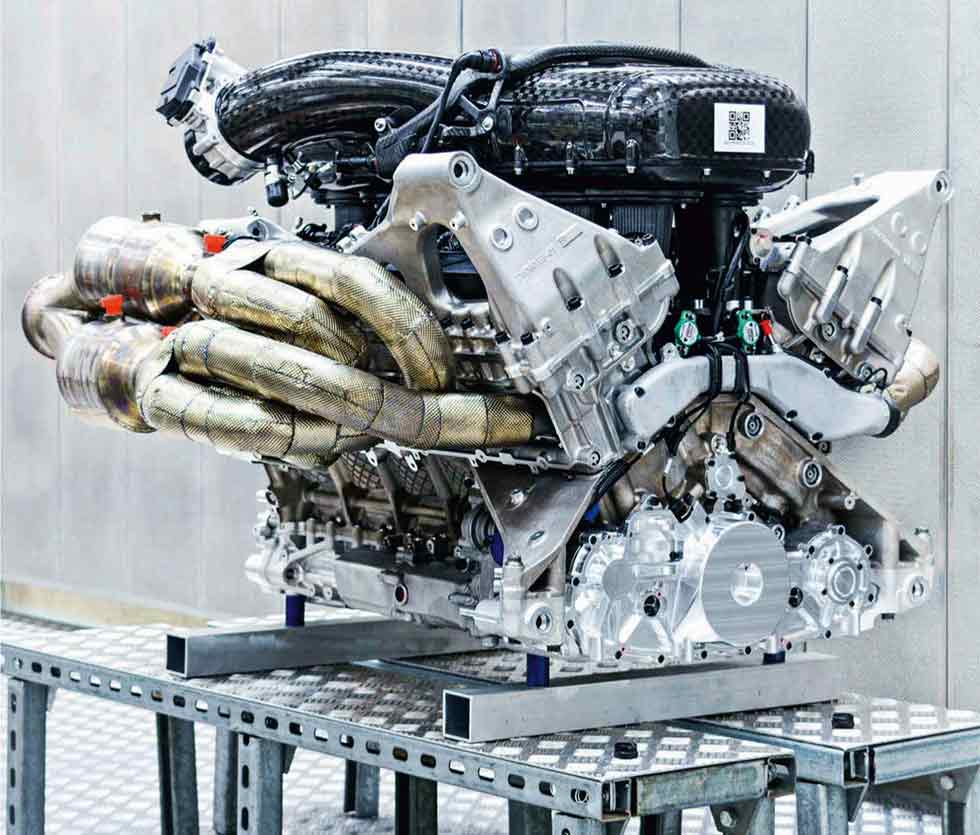Forget turbos, this is perfection. Secrets of the insane 11,000rpm V12 destined for Aston’s Valkyrie.
COME AGAIN? The engine figures
REVOLUTIONS PER MINUTE 11,100
PEAK TORQUE AT 7000RPM 740Nm
MAX POWER BHP 985
WEIGHT KILOGRAMS 202
If you don’t come away frightened, then there’s something wrong with you.”
That’s the warning Cosworth MD Bruce Wood gave media before his company’s 6.5-litre V12, built for the Aston Martin Valkyrie, was unleashed on an engine dyno for a huddled mass.
Producing 735kW and 740Nm, with a redline of 11,100rpm, the Valkyrie’s engine is something to be both feared and celebrated.

In an era when internal combustion is being threatened, Cosworth has created what could well be the greatest engine of its kind. TheValkyrie’s powerplant is the most powerful naturally aspirated V12 ever produced, including dedicated racing units.
Valkyrie is a collaboration between Aston and the Red Bull F1 race team, spearheaded by Adrian Newey. The design guru’s famed attention to detail went so far as to ensure the 130-gram lacquer on the engine’s intakes be an optional extra due to its added weight. Newey’s target for the V12 was 200kg (80kg less than the 7.3L V12 in 2009’s Aston Martin One-77), which Cosworth missed by just a couple kilos.
In order to build such a lithe product there are no liners in the engine, with plasma coating used on the cylinder walls. When spun near redline, the Valkyrie’s 12 pistons are each travelling upwards of 90km/h. Allowing the engine to spin at a rate well beyond even the 911 GT3’s 9000rpm redline is the use of tech traditionally reserved for race vars. The Valkyrie’s four cams are driven by gears, not chains, as the latter suffer reliability issues above 10,000rpm.
Other concessions were needed for reliability – it has variable valve timing, but not variable lift, as the latter can’t react fast enough high in the rev range. The crankshaft is milled from solid steel, while aerospace-quality materials are used for the alloy heads and titanium rods and valves, with Cosworth shunning more exotic options as they couldn’t ensure long-term reliability. While performance was clearly a key design brief, so to was the engine’s lifespan, with Cosworth eager to point out their creation will require less maintenance than the 1.6-litre turbo V6 F1 engine fitted to the Valkyrie’s German rival – the Mercedes-AMG One – which is being developed just 34 kilometres down the road.

Cosworth has put the V12 through over 200 hours of dyno testing, much of it at full throttle, replicating 160,000-kilometres of driving. Oil changes are needed every 5000km. Boosting performance further, and aiding low-speed tractability, is a single-motor KERS (kinetic energy recovery system) being developed by Croatian company Rimac. The entire powertrain will drive the rear wheels exclusively, with the combustion unit channelled through a Ricardo-built single-clutch transmission.
Consider its visual beauty, stratospheric performance and pioneering engineering, and the Valkyrie’s V12 is at the same time both outlandish old-school tribute and sophisticated, cutting-edge design.





